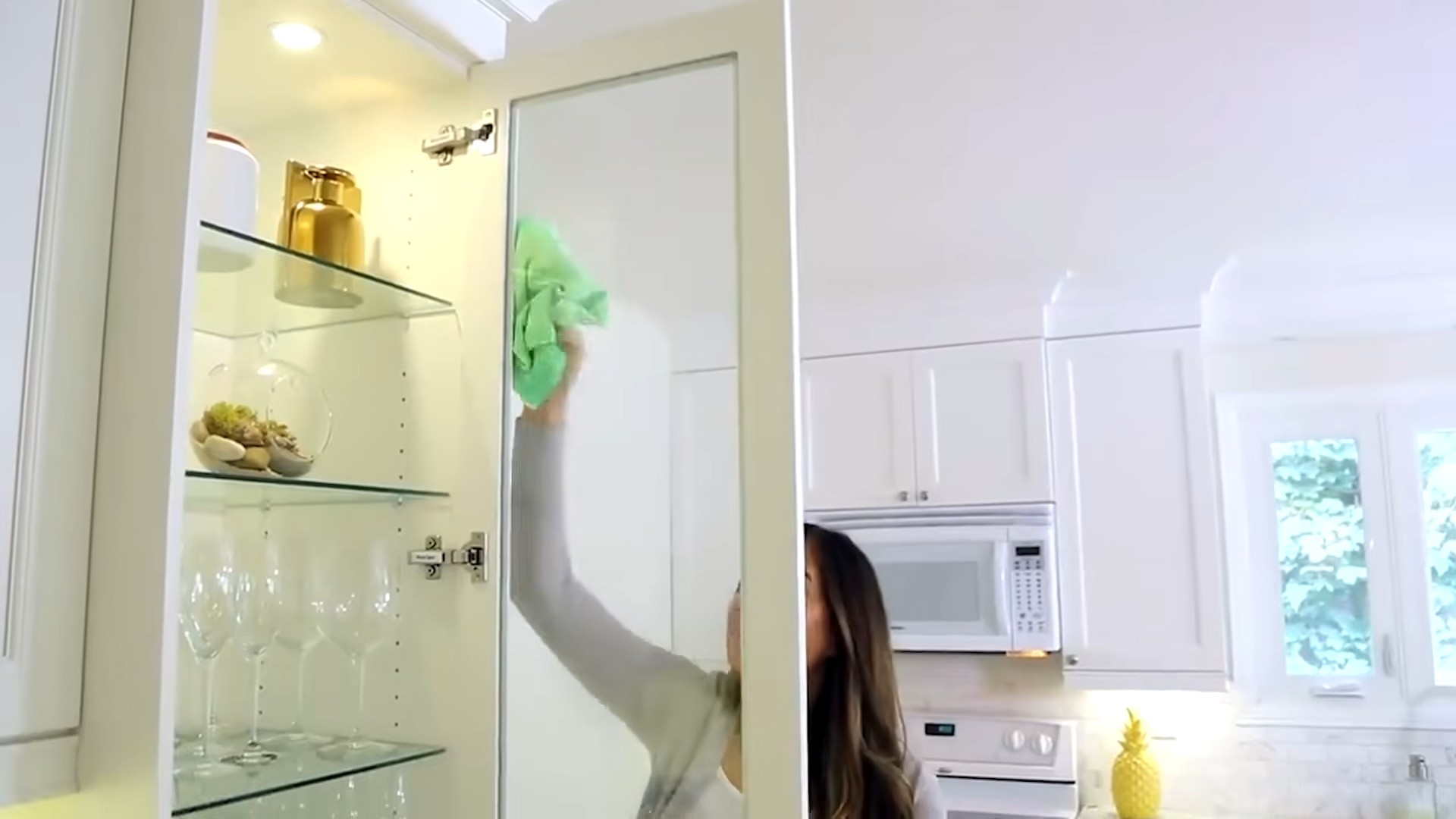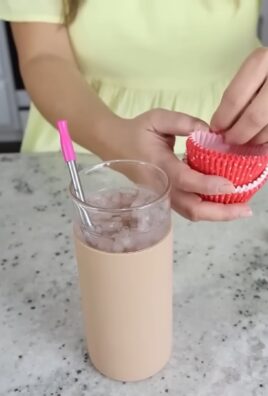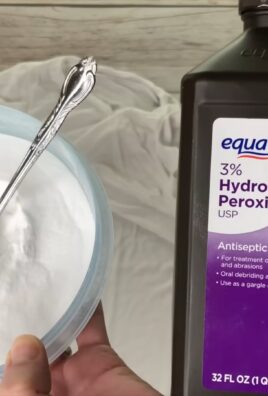Rubbing Alcohol Cleaning Hacks: Unlock the sparkling potential of your home with this surprising secret weapon! Are you tired of battling stubborn stains, lingering odors, and grimy surfaces? I know I was! For generations, rubbing alcohol, also known as isopropyl alcohol, has been a staple in medicine cabinets, prized for its antiseptic properties. But did you know its cleaning power extends far beyond first aid?
From ancient apothecaries using alcohol-based tinctures to modern-day households relying on its disinfecting abilities, rubbing alcohol has a rich history of keeping things clean and healthy. But it’s time to unleash its full potential! In this article, I’m going to share some amazing rubbing alcohol cleaning hacks that will revolutionize your cleaning routine.
Why do you need these hacks? Because life’s too short to spend hours scrubbing! These simple, cost-effective tricks will save you time, money, and effort, leaving you with a spotless home and more time to enjoy the things you love. Get ready to discover the magic of rubbing alcohol and transform your cleaning game forever!

Unlocking the Cleaning Power of Rubbing Alcohol: DIY Hacks You Need to Know
Hey there, fellow cleaning enthusiasts! I’m always on the lookout for budget-friendly and effective ways to keep my home sparkling. And guess what? I’ve discovered the magic of rubbing alcohol (isopropyl alcohol) for cleaning! It’s not just for first aid anymore. This stuff is a cleaning powerhouse, and I’m excited to share some of my favorite DIY hacks with you. Get ready to be amazed!
Why Rubbing Alcohol?
Before we dive in, let’s quickly talk about why rubbing alcohol is such a great cleaning agent. It’s a fantastic disinfectant, meaning it kills germs and bacteria. It also evaporates quickly, leaving surfaces streak-free. Plus, it’s relatively inexpensive and readily available at most drugstores and supermarkets. I usually opt for the 70% isopropyl alcohol solution for most cleaning tasks, as it’s a good balance between effectiveness and safety.
Hack 1: Streak-Free Window and Mirror Cleaner
Say goodbye to those annoying streaks on your windows and mirrors! This DIY cleaner is super easy to make and works like a charm.
What you’ll need:
* Spray bottle
* 1 cup rubbing alcohol (70% isopropyl alcohol)
* 1 cup water
* 1 tablespoon white vinegar (optional, for extra cleaning power)
* Few drops of essential oil (optional, for a pleasant scent – I like lemon or lavender)
* Microfiber cloth
Step-by-step instructions:
1. Mix the ingredients: In your spray bottle, combine the rubbing alcohol, water, and white vinegar (if using).
2. Add essential oil (optional): If you want to add a nice scent, add a few drops of your favorite essential oil. I find that lemon oil helps cut through grease, while lavender oil leaves a calming aroma.
3. Shake well: Secure the spray nozzle and shake the bottle well to ensure all the ingredients are thoroughly mixed.
4. Spray and wipe: Spray the solution onto your windows or mirrors. Don’t over-saturate the surface.
5. Wipe with a microfiber cloth: Use a clean microfiber cloth to wipe the surface in a circular motion. Then, go over it again with a dry section of the cloth to remove any remaining moisture.
6. Admire your streak-free shine! Step back and enjoy your sparkling clean windows and mirrors.
Hack 2: Disinfecting Electronics
Our phones, tablets, and keyboards are breeding grounds for germs. Rubbing alcohol is a safe and effective way to disinfect them without damaging the delicate screens and components.
What you’ll need:
* Rubbing alcohol (70% isopropyl alcohol)
* Cotton swabs or microfiber cloth
* Spray bottle (optional, for larger surfaces)
Step-by-step instructions:
1. Power off your device: Before you start, make sure your phone, tablet, or laptop is completely powered off. This is crucial to prevent any electrical damage.
2. Dampen a cotton swab or cloth: Dip a cotton swab or corner of a microfiber cloth into the rubbing alcohol. Make sure it’s damp, not soaking wet. You don’t want any liquid dripping into the device.
3. Gently wipe the surface: Carefully wipe down the screen, keyboard, and any other surfaces you want to disinfect. Pay attention to areas that you touch frequently, like the home button, volume buttons, and charging port.
4. Allow to air dry: Let the alcohol evaporate completely before turning your device back on. This usually takes just a few seconds.
5. For larger surfaces (optional): If you’re cleaning a larger surface like a laptop screen, you can lightly spray the rubbing alcohol onto a microfiber cloth and then wipe the screen. Never spray directly onto the device.
Hack 3: Removing Permanent Marker Stains
Oh no! Permanent marker on your furniture, walls, or clothes? Don’t panic! Rubbing alcohol can often come to the rescue.
What you’ll need:
* Rubbing alcohol (70% or 91% isopropyl alcohol – 91% might be more effective for stubborn stains)
* Cotton balls or clean cloth
* Clean water
* Clean cloth
Step-by-step instructions:
1. Test in an inconspicuous area: Before applying rubbing alcohol to the stain, test it on a hidden area of the fabric or surface to make sure it doesn’t cause any discoloration or damage.
2. Apply rubbing alcohol to the stain: Soak a cotton ball or clean cloth with rubbing alcohol.
3. Blot the stain: Gently blot the stain with the alcohol-soaked cotton ball or cloth. Avoid rubbing, as this can spread the stain.
4. Repeat as needed: Continue blotting with fresh cotton balls or clean sections of the cloth until the stain starts to lift.
5. Rinse with water: Once the stain is gone or significantly faded, rinse the area with clean water to remove any remaining alcohol.
6. Blot dry: Use a clean, dry cloth to blot the area dry.
7. Launder (for clothing): If you’re removing a stain from clothing, launder the item as usual after treating the stain.
Hack 4: Cleaning and Disinfecting Bathroom Fixtures
Keep your bathroom sparkling clean and germ-free with this simple rubbing alcohol hack.
What you’ll need:
* Spray bottle
* Rubbing alcohol (70% isopropyl alcohol)
* Microfiber cloth
Step-by-step instructions:
1. Fill the spray bottle: Pour rubbing alcohol into a spray bottle.
2. Spray the fixtures: Spray the rubbing alcohol onto your bathroom fixtures, including faucets, showerheads, doorknobs, and toilet handles.
3. Wipe clean: Use a clean microfiber cloth to wipe down the fixtures.
4. Let air dry: Allow the alcohol to air dry completely. This will ensure that it disinfects the surfaces effectively.
Hack 5: Removing Sticky Residue
We’ve all been there – sticky residue from labels, tape, or stickers that just won’t budge. Rubbing alcohol to the rescue!
What you’ll need:
* Rubbing alcohol (70% or 91% isopropyl alcohol)
* Cotton ball or clean cloth
* Plastic scraper or old credit card (optional, for stubborn residue)
Step-by-step instructions:
1. Soak the residue: Soak a cotton ball or clean cloth with rubbing alcohol.
2. Apply to the residue: Press the alcohol-soaked cotton ball or cloth onto the sticky residue and let it sit for a few minutes to soften the adhesive.
3. Wipe away: After a few minutes, try wiping away the residue with the cloth.
4. Scrape (if needed): If the residue is particularly stubborn, use a plastic scraper or old credit card to gently scrape it away. Be careful not to scratch the surface.
5. Repeat if necessary: Repeat the process until all the residue is gone.
6. Clean the surface: Once the residue is removed, clean the surface with a damp cloth to remove any remaining alcohol.
Hack 6: Freshening Up Sponges
Sponges can quickly become breeding grounds for bacteria. Keep them fresh and clean with this simple trick.
What you’ll need:
* Rubbing alcohol (70% isopropyl alcohol)
* Ziploc bag
Step-by-step instructions:
1. Place the sponge in a Ziploc bag: Put your damp sponge in a clean Ziploc bag.
2. Pour in rubbing alcohol: Pour enough rubbing alcohol into the bag to saturate the sponge.
3. Seal the bag: Seal the Ziploc bag tightly.
4. Let it soak: Let the sponge soak in the rubbing alcohol for at least 10 minutes.
5. Remove and rinse: Remove the sponge from the bag and rinse it thoroughly with warm water.
6. Squeeze out excess water: Squeeze out as much excess water as possible.
7. Let it air dry: Allow the sponge to air dry completely before using it again.
Hack 7: Cleaning Jewelry
Give your jewelry a sparkling shine with rubbing alcohol. It’s a gentle and effective way to remove dirt, oil, and grime.
What you’ll need:
* Rubbing alcohol (70% or 91% isopropyl alcohol)
* Small bowl
* Soft-bristled toothbrush (optional)
* Clean cloth
Step-by-step instructions:
1. Soak the jewelry: Pour rubbing alcohol into a small bowl. Place your jewelry in

Conclusion
So, there you have it! Rubbing alcohol cleaning hacks are not just a trend; they’re a game-changer for a cleaner, fresher, and healthier home. We’ve explored a range of applications, from sanitizing surfaces to reviving shine, all powered by the humble bottle of isopropyl alcohol. The versatility and affordability of this cleaning agent make it an absolute must-try for anyone looking to simplify their cleaning routine and achieve professional-level results without breaking the bank.
But why is this DIY approach so compelling? It boils down to effectiveness and efficiency. Rubbing alcohol’s potent disinfecting properties make it ideal for tackling germs and bacteria on frequently touched surfaces, providing peace of mind, especially during cold and flu season. Its quick-drying nature prevents streaks and water spots, leaving surfaces sparkling clean. And let’s not forget the cost savings! Compared to expensive, specialized cleaning products, rubbing alcohol offers a budget-friendly alternative that delivers exceptional results.
Ready to take your cleaning game to the next level? Don’t be afraid to experiment and find what works best for you. For instance, if you’re sensitive to the scent of rubbing alcohol, consider adding a few drops of your favorite essential oil, like lavender or lemon, to your cleaning solution. This will not only mask the odor but also add an extra boost of aromatherapy benefits to your cleaning routine. Another variation to consider is the concentration of rubbing alcohol you use. While a 70% solution is generally recommended for disinfecting, you can adjust the concentration depending on the specific task at hand. For example, for removing sticky residue, a higher concentration might be more effective.
We encourage you to embrace these rubbing alcohol cleaning hacks and discover the transformative power of this simple yet effective ingredient. From sparkling mirrors to sanitized electronics, the possibilities are endless.
But the real magic happens when you share your experiences with others. We’d love to hear about your favorite rubbing alcohol cleaning hacks and any tips or tricks you’ve discovered along the way. Did you find a particularly effective way to clean a specific surface? Did you come up with a creative solution to a common cleaning problem? Share your stories in the comments below! Your insights could help other readers discover new and innovative ways to use rubbing alcohol to create a cleaner, healthier, and happier home. So, go ahead, give these hacks a try, and let us know what you think. Happy cleaning!
Frequently Asked Questions (FAQs)
What exactly is rubbing alcohol, and what makes it such a good cleaner?
Rubbing alcohol, also known as isopropyl alcohol, is a versatile chemical compound with potent disinfecting and cleaning properties. Its molecular structure allows it to dissolve a wide range of substances, including grease, grime, and sticky residues. More importantly, it’s a powerful disinfectant, effectively killing bacteria, viruses, and fungi on contact. The key to its effectiveness lies in its ability to denature proteins and disrupt the cell membranes of microorganisms, rendering them harmless. This makes it an ideal choice for sanitizing surfaces and preventing the spread of germs. Furthermore, rubbing alcohol evaporates quickly, leaving surfaces clean and streak-free. Its affordability and availability make it a practical and cost-effective cleaning solution for a variety of household tasks.
Is it safe to use rubbing alcohol on all surfaces? Are there any surfaces I should avoid?
While rubbing alcohol is generally safe for use on many surfaces, there are certain materials that you should avoid. Always test in an inconspicuous area first! Avoid using rubbing alcohol on delicate or porous surfaces like painted wood, shellacked furniture, or certain types of plastic, as it can potentially damage or discolor them. It’s also best to avoid using it on natural stone surfaces like marble or granite, as it can strip away their sealant and dull their shine. Leather is another material that should be avoided, as rubbing alcohol can dry it out and cause cracking. Before using rubbing alcohol on any surface, it’s always a good idea to test it in a small, hidden area to ensure that it doesn’t cause any damage or discoloration. When in doubt, consult the manufacturer’s instructions for the specific surface you’re cleaning.
What concentration of rubbing alcohol is best for cleaning and disinfecting?
The ideal concentration of rubbing alcohol for cleaning and disinfecting is typically between 70% and 99%. A 70% solution is generally recommended for disinfecting purposes, as it contains enough water to help the alcohol penetrate the cell walls of microorganisms more effectively. While a 99% solution is more concentrated, it evaporates too quickly to be as effective at killing germs. For general cleaning tasks, either concentration can be used, but a 70% solution is often preferred due to its slightly longer contact time. Always check the label of your rubbing alcohol to determine its concentration and adjust your cleaning solution accordingly.
Can I mix rubbing alcohol with other cleaning products?
It’s generally not recommended to mix rubbing alcohol with other cleaning products, especially bleach. Mixing rubbing alcohol with bleach can create toxic fumes that can be harmful to your health. Other combinations may also result in unexpected chemical reactions or reduce the effectiveness of the cleaning solution. It’s always best to use rubbing alcohol on its own or in combination with water or a mild detergent. If you’re unsure about mixing rubbing alcohol with another cleaning product, it’s always best to err on the side of caution and avoid doing so.
How should I store rubbing alcohol safely?
Rubbing alcohol is flammable and should be stored safely to prevent accidents. Keep it in a tightly sealed container in a cool, dry, and well-ventilated area, away from heat, sparks, and open flames. Store it out of reach of children and pets, as it can be harmful if ingested. Avoid storing rubbing alcohol near other flammable materials or chemicals. When disposing of rubbing alcohol, follow local regulations for hazardous waste disposal.
Is rubbing alcohol safe to use around children and pets?
While rubbing alcohol is a useful cleaning agent, it’s important to use it safely around children and pets. Keep rubbing alcohol out of reach of children and pets, as it can be harmful if ingested or inhaled. When using rubbing alcohol for cleaning, ensure that the area is well-ventilated to prevent the buildup of fumes. Avoid using rubbing alcohol on surfaces that children or pets may come into contact with, such as toys or food bowls. If you suspect that a child or pet has ingested rubbing alcohol, seek medical or veterinary attention immediately.
Can rubbing alcohol be used to clean electronics?
Yes, rubbing alcohol can be used to clean electronics, but it’s important to do so carefully. Use a cotton swab or microfiber cloth dampened with rubbing alcohol to gently wipe down the surface of the electronic device. Avoid getting any liquid inside the device, as this can cause damage. Before cleaning any electronic device, always turn it off and unplug it from the power source. Allow the rubbing alcohol to evaporate completely before turning the device back on. Rubbing alcohol is particularly effective for cleaning screens, keyboards, and other surfaces that can accumulate dirt and grime.
What are some common mistakes to avoid when using rubbing alcohol for cleaning?
One common mistake is using too much rubbing alcohol, which can leave a residue or damage certain surfaces. Another mistake is not testing the rubbing alcohol on an inconspicuous area before using it on a larger surface. It’s also important to avoid mixing rubbing alcohol with other cleaning products, especially bleach. Finally, be sure to store rubbing alcohol safely and keep it out of reach of children and pets. By avoiding these common mistakes, you can ensure that you’re using rubbing alcohol safely and effectively for all your cleaning needs.





Leave a Comment